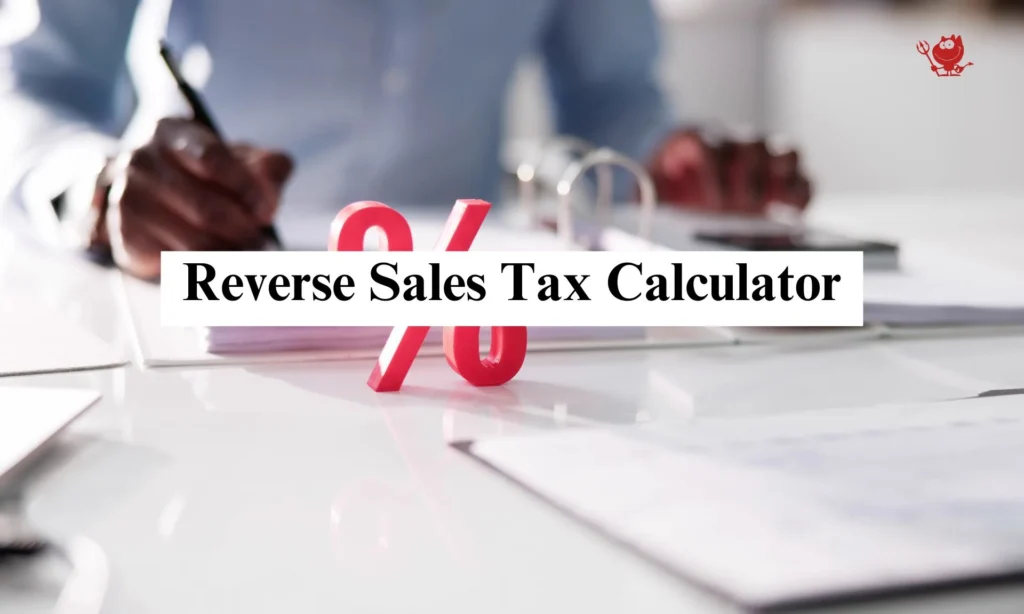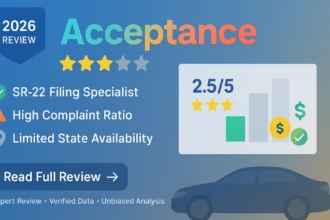Introduction

Understanding the true cost of goods before sales tax is crucial for businesses and consumers alike in the United States. Whether you’re reconciling financial records, comparing prices across state lines, or simply trying to understand your purchase costs, a reverse sales tax calculator is an invaluable tool. This comprehensive guide will walk you through everything you need to know about calculating pre-tax prices in the American market.
Understanding Reverse Sales Tax Calculations
What Is Reverse Sales Tax?
Reverse sales tax calculation is the process of determining the original price of a product or service before sales tax was applied. This calculation is particularly important in the United States, where sales tax rates vary significantly by state and even by municipality.
The Importance of Reverse Sales Tax Calculations
In today’s complex tax landscape, understanding reverse sales tax serves multiple purposes:
- Financial Planning: Helps businesses and individuals budget accurately
- Tax Reconciliation: Assists in identifying potential tax overpayments
- Price Comparison: Enables fair comparison of prices across different tax jurisdictions
- Accounting Accuracy: Ensures proper bookkeeping and financial reporting
- Tax Recovery: Facilitates the process of reclaiming overpaid taxes
The Mathematics Behind Reverse Sales Tax
Basic Formula
The fundamental formula for calculating the original price before tax is:
Original Price = Final Price / (1 + (Sales Tax Rate / 100))
For example, if you paid $100 with a 6% sales tax: Original Price = $100 / (1 + (6/100)) = $100 / 1.06 = $94.34
Alternative Calculation Methods
- Direct Subtraction Method:
- Original Price = Final Price – Sales Tax Amount
- Sales Tax Amount = Original Price × Sales Tax Rate
- Percentage-Based Method:
- Original Price = (Final Price × 100) / (100 + Sales Tax Percentage)
State-by-State Sales Tax Analysis (2025)
Highest Combined Sales Tax Rates
As of 2025, the states with the highest combined state and average local sales tax rates are:
- Tennessee: 9.548%
- Louisiana: 9.547%
- Arkansas: 9.443%
- Washington: 9.397%
- Alabama: 9.237%
States with No Sales Tax
Five states maintain a 0% state sales tax rate:
- Alaska
- Delaware
- Montana
- New Hampshire
- Oregon
Practical Applications of Reverse Sales Tax Calculator
For Businesses
- Inventory Management
- Tracking true cost of goods
- Setting competitive prices
- Managing profit margins
- Financial Planning
- Budgeting for purchases
- Forecasting expenses
- Tax liability planning
- Tax Compliance
- Verifying tax calculations
- Preparing tax returns
- Auditing sales records
For Consumers
- Personal Budgeting
- Understanding true costs
- Comparing prices across retailers
- Planning major purchases
- Tax Recovery
- Identifying overcharges
- Documenting tax payments
- Filing tax refund claims
Advanced Reverse Sales Tax Scenarios
Multiple Tax Jurisdictions
Some locations have overlapping tax jurisdictions. For example, a purchase might be subject to:
- State sales tax
- County sales tax
- City sales tax
- Special district taxes
In these cases, the formula becomes: Original Price = Final Price / (1 + Combined Tax Rate)
Special Tax Categories
Different tax rates may apply to:
- Food and beverages
- Clothing
- Medical supplies
- Business equipment
- Services
- Digital goods
Best Practices for Using Reverse Sales Tax Calculator
- Documentation
- Keep all receipts
- Record tax rates applied
- Note any special circumstances
- Verification
- Double-check tax rates
- Confirm jurisdiction
- Verify calculations
- Regular Updates
- Monitor tax rate changes
- Update calculation tools
- Review tax policies
Digital Tools and Resources
Online Calculators
Several reliable online tools are available for reverse sales tax calculations:
- State government websites
- Accounting software platforms
- Financial planning tools
- Mobile apps
Software Integration
Modern accounting and point-of-sale systems often include reverse sales tax calculation features:
- Automatic tax rate updates
- Multi-jurisdiction support
- Historical rate tracking
- Report generation
Common Pitfalls and How to Avoid Them
- Rate Confusion
- Solution: Verify current rates through official sources
- Regular updates of tax tables
- Documentation of rate changes
- Jurisdiction Errors
- Solution: Confirm exact location of sale
- Check for special districts
- Verify combined rates
- Calculation Mistakes
- Solution: Use automated tools
- Double-check manual calculations
- Maintain proper records
Industry-Specific Considerations
Retail
- Multiple tax categories
- Seasonal tax changes
- Special promotions
Services
- Variable tax applications
- Mixed taxable/non-taxable services
- Interstate service delivery
E-commerce
- Multi-state transactions
- Digital goods taxation
- Marketplace facilitator laws
Future Trends in Sales Tax Calculation
Digital Transformation
- Automated tax calculation systems
- Real-time rate updates
- Blockchain integration
- AI-powered tax analysis
Regulatory Changes
- Simplified tax structures
- Standard interstate rates
- Digital service taxation
- Green tax initiatives
Conclusion
Understanding and effectively using a reverse sales tax calculator is essential for financial success in the United States’ complex tax landscape. Whether you’re a business owner managing inventory costs or a consumer trying to understand true prices, mastering reverse sales tax calculations can lead to better financial decisions and accurate record-keeping.
Key Takeaways
- Reverse sales tax calculations are crucial for understanding true costs
- State and local tax rates vary significantly across the US
- Different calculation methods suit different scenarios
- Regular updates and verification ensure accuracy
- Digital tools can simplify the process
Next Steps
- Bookmark reliable reverse sales tax calculator tools
- Stay informed about tax rate changes in your jurisdiction
- Maintain organized records of all tax-related calculations
- Consider professional assistance for complex scenarios
Frequently Asked Questions
What is the purpose of a reverse sales tax calculator?
A reverse sales tax calculator helps determine the original price of an item before sales tax was applied. This is particularly useful for businesses and consumers who need to understand true costs, compare prices across different tax jurisdictions, or reconcile financial records.
How accurate are reverse sales tax calculations?
When using the correct formula and current tax rates, reverse sales tax calculations are highly accurate. However, rounding differences of $0.01 may occur due to different rounding methods used by businesses.
Can reverse sales tax calculators handle multiple tax jurisdictions?
Yes, advanced reverse sales tax calculators can account for multiple tax jurisdictions by using the combined tax rate in the calculation formula.
How do I know which tax rate to use when there are multiple rates in my area?
For accurate reverse calculations, you should use the combined tax rate that includes all applicable taxes (state, county, city, and special district taxes). For example, if your state tax is 6% and your local tax is 2%, you would use 8% as your combined rate. Always verify current rates through official government websites or tax authorities.
What should I do if I discover I’ve been charged the wrong sales tax rate?
If you discover incorrect sales tax charges, first verify the correct rate for your jurisdiction and purchase type. Document the discrepancy with receipts and tax rate information. Contact the seller first to request a correction. If necessary, you can file a claim with your state’s department of revenue or consumer protection office for tax refunds.
Do all items have the same sales tax rate?
No, sales tax rates can vary by product category. Essential items like groceries, prescription medications, and certain clothing items may be taxed at lower rates or exempt from sales tax entirely in some states. Always verify the specific tax rate for your purchase category in your jurisdiction.
How do sales tax holidays affect reverse calculations?
During sales tax holidays (temporary periods when certain items are exempt from sales tax), reverse calculations aren’t necessary for qualifying items since no sales tax should be charged. However, it’s important to verify which items qualify and the exact dates of the tax holiday, as these vary by state.
Can I use a reverse sales tax calculator for online purchases?
Yes, you can use a reverse sales tax calculator for online purchases, but you need to ensure you’re using the correct tax rate. For online sales, the applicable rate is typically based on the delivery address (destination-based taxation) rather than the seller’s location. Some states have special rules for online marketplace facilitators.
How often do sales tax rates change, and how does this affect calculations?
Sales tax rates can change annually or even mid-year, depending on your jurisdiction. State-level changes typically occur at the beginning of the fiscal year, while local rates might change more frequently. It’s essential to verify current rates before performing calculations and maintain records of rate changes for historical transactions.
What documentation should I keep when using reverse sales tax calculations?
Keep all original receipts showing the final price and tax amount, documentation of the tax rates applied (including screenshots or printouts from official sources), and records of your calculations. For business purposes, also maintain records of any exemption certificates and special tax situations. This documentation is crucial for audit purposes and tax reconciliation.
In another related article, How to Use a HELOC Calculator to Find Your Best Rate





